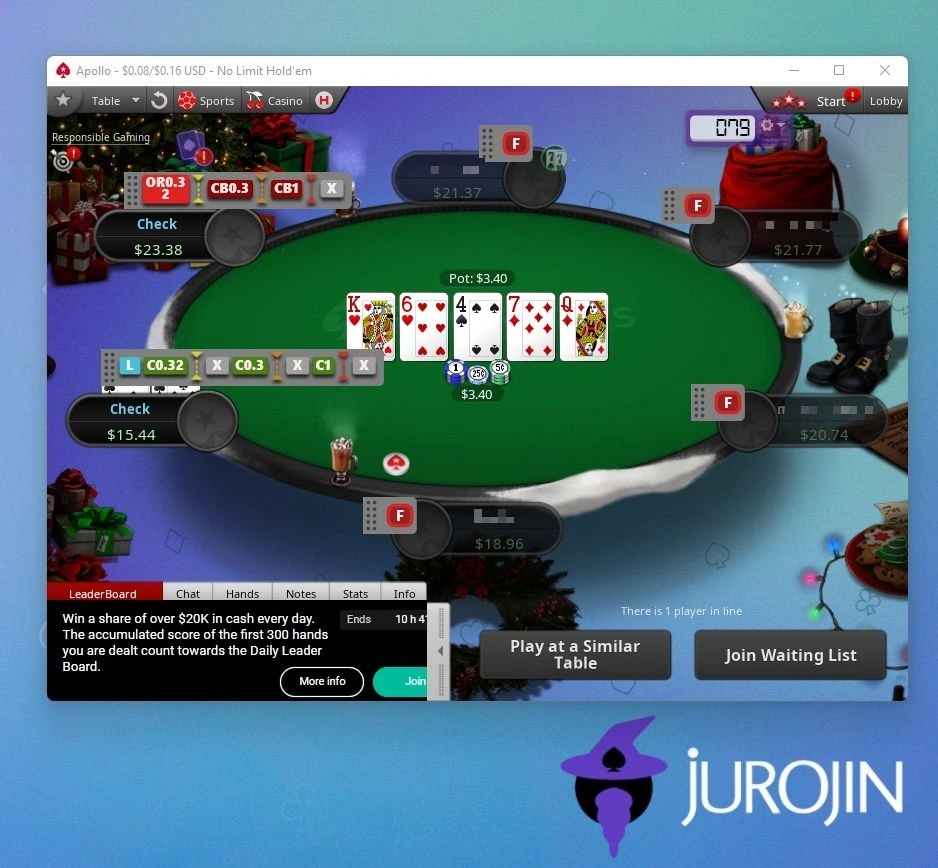Using Action History to Determine Opponent's Range

Apr 25, 2025
•
2 min read
So, as a hand progresses, you should continually be ‘ranging’ your opponent: For each action, assess your opponent’s range and narrow it based on the available information.
- Upswing Poker
Let’s dive back into the river, where the final card often determines the showdown winner. River strategies hinge on understanding which range holds the nut advantage—a concept rooted in action history.
By analyzing the progression of bets and decisions, we can refine our hand reading and determine who has the upper hand.
Let’s explore how action history reveals these crucial insights!
Accurately Assess your Opponents’ Ranges
When we imagine poker’s entire game tree, each branch represents a different portion of a player’s preflop starting range. Each decision point—every action a player takes—progressively narrows down their range.
By the time we reach the river, with all possible betting rounds completed, we have the most detailed action history available to estimate our opponent’s range.
This becomes clear when we focus on extreme scenarios. Let’s look at two examples to explore this further.
Example 1
The Button opens, and the Big Blind defends. The flop, turn, and river are checked all the way to showdown. What kinds of hands do you think these players might have?
Often, neither player will have a top pair or better. Even second pair is unlikely, as no one tried to make a thin value bet at any point.
Additionally, no one bluffed. Assuming both players have some skill, they likely hold hands with showdown value, such as Ace-high or bottom pair.
Example 2
Same preflop action. This time, Button c-bets flop but faces a check-raise from Big Blind, who then bets turn and shoves river. What hands can we expect?
Big Blind’s line suggests strong value, like two-pair or better. Without a board, likely bluffs would have nut potential, such as flush or straight draws.
Button’s continued defense points to a solid bluff-catcher, possibly an overpair at worst.
👉 Notice the GTO output below. 2nd pair checks this turn, so if we see another action taken, we can eliminate those combos from the player’s range.

Reviewing the Entire Hand’s Action History
The key to accurately assess your opponent’s ranges is to recall the action history from start to finish, and logically eliminate combos of hands that make different decisions.
It is important to understand that unless your opponent is especially bad, you should strive to put them on a range of hands and then narrow that range as play progresses based on their action.
- Jonathan Little
Beginners often stumble by assuming people play a certain way when they really do not. Fortunately, as you put in volume, your intuition and logical reasoning will improve as you review hand histories.
The problem for most grinders actually becomes one of memory, not reasoning. That’s because professionals multi-table and find themselves playing many hands at once. There’s no other way to make the volume needed to see “the long run.”
Therefore as profit driven players, we must know how to keep track of the action on one table while several others divert our attention. For this reason, every professional player uses multi-tabling software.
Jurojin’s Action History HUD Overlay
For example, Jurojin’s multi-tabling software includes an action history overlay that displays everyone’s hand actions from preflop to your current decision point every time you have cards in front of you.
That way, when you arrive at the river on one table, you always know what decisions lead to that point. You’ll have all the information to properly range your opponent and assess nut-advantage to make the best river decision possible.

Without notes, we either play too many tables and make poor decisions or too few and lose volume. Losing focus on a single table can lead to forgetting key actions. Tools like Jurojin’s action history overlay saves us from such costly blunders.
Conclusion
In conclusion, reviewing a hand’s action history helps identify which range has the advantage. By understanding how hand strengths influence decisions, you can better predict your opponent’s cards.
Professional players bet the river profitably when their range includes more strong hands than their opponent’s, and proceed cautiously when the advantage shifts.
To stay on top of action histories while playing multiple tables, tools like Jurojin Poker provide helpful overlays that track player actions during a hand.
ZOOM IN
The following links are recommended resources related to this section’s theme. Don’t stay in doubt--dive in! 🔔
- Ranges: Learn how to calculate & use poker ranges.
- Action History: Discover Jurojin’s solution to tracking play history.
- Hand Histories: Find out what hand tracking software is right for your hand history reviews.
- Solvers: GTO helps us understand range funneling. Discover the best solver to do this with.
- Discord Community: Join the coolest poker community, don’t be shy! Use it to ask questions and interact with other poker enthusiasts and professionals.